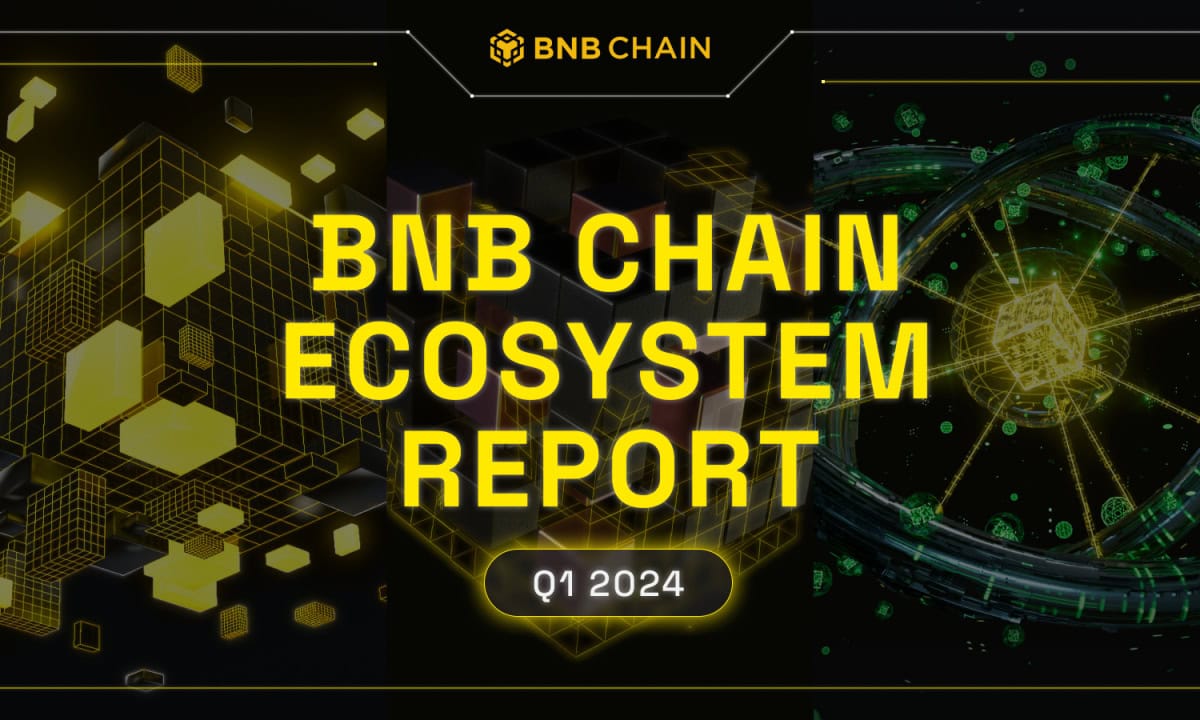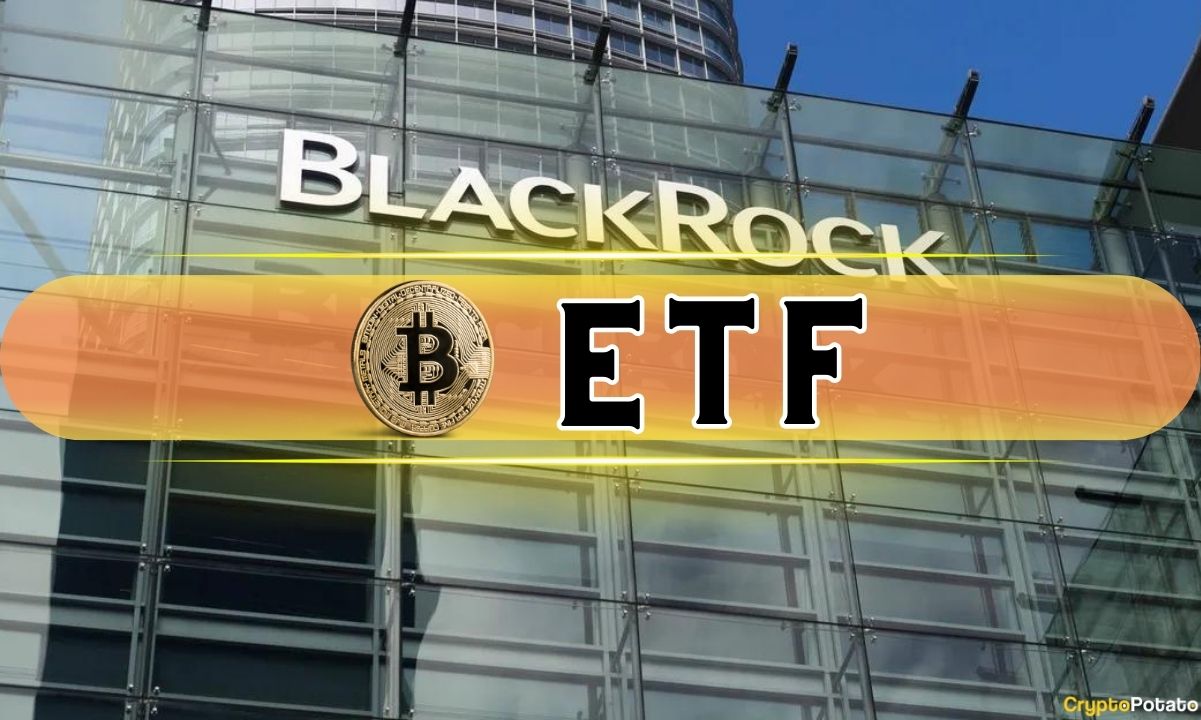Cryptocurrency
Web3 usernames may see greater adoption due to recent advancements

Ever since the Ethereum Name Service (ENS) was launched in 2017, Web3 users have been able to replace the long strings of characters that make up a crypto address with a more easily memorized blockchain username or Web3 domain name. For example, Ethereum (ETH) users can now send crypto to the network’s founder, Vitalik Buterin, at his username of vitalik.eth without knowing that his address is 0xd8da6bf26964af9d7eed9e03e53415d37aa96045.
But despite this advancement making it much easier to identify users, hardly anyone has taken advantage of it. There are over 200 million unique addresses on Ethereum, yet only 2.2 million .eth names were registered as of January. This means that at least 97% of Ethereum addresses are not associated with an ENS username.
This lack of usernames creates user experience problems in the Web3 ecosystem. Just imagine if early email addresses had consisted of long strings of characters that looked like 0x7a16ff8270133f063aab6c9977183d9e72835428 or 0x3A7937851d67Ee2f51C959663749093Dc87D9C9a. If this had been the case, Email may not have survived as a practice.
But despite this initial lack of adoption, there is some evidence that the tide may be turning in favor of Web3 usernames. A few recent advancements in wallet and messaging apps may onboard more users than ever before.
One of these advancements is better wallet integration with free usernames.
Wallet integration and free usernames
Wallets have had the ability to understand Web3 names for a long time. According to Metamask’s changelog, it introduced the ability to send to a .eth name in October, 2017, right after ENS launched. Other wallets have followed suit with this feature, including Coinbase wallet, Trustwallet, and others. Some of these wallets have also integrated with ENS rivals Unstoppable Domains, Space ID, Bonfida and others.
However, these wallets still show a crypto address to users by default, as new users don’t typically receive names automatically.
In order for a user to receive crypto via their Web3 name, they need to first register a username with a particular name provider. This means figuring out which provider to use, navigating to the providers interface, and going through the process of registering.
To make matters worse, names can be expensive. ENS names typically cost $5 and expire after a year, while Unstoppable Domains names that do not need to be renewed typically cost from $20-$40. Compare this with how easy it is to sign up for an email address for free using Gmail, Outlook, Yahoo. etc., and it’s easy to see why most crypto users don’t have a Web3 username.
A few wallet apps have been trying to solve this problem by giving away free domain names to their users. For example, Coinbase wallet allows new users to register a single .cb.id username for free, once per year, and Kresus wallet offers its users a free .kresus username of up to 8 characters as well.
This practice of giving out free usernames has begun only recently. And some popular wallets like Trustwallet and Metamask still don’t offer the feature. But as more users onboard to the Web3 ecosystem, this may lead to greater adoption of Web3 usernames over time.
Another recent advancement is instant messaging integration.
Chat messaging with Web3 usernames
Some messaging apps have begun to implement Web3 names as usernames, increasing these names’ utility beyond the payments use-case. One example is Blockscan Chat. It allows users to send instant messages to any Ethereum address or ENS username.
When messages are sent using Blockscan chat, they produce alerts on the Etherscan block explorer. If the recipient sees the alert and logs into the app, they are able to read the message. The developer of the app claims that all of its messages are end-to-encrypted. So although anyone can see if a particular user has received a message, only the sender and recipient can read it.
Web3 usernames aren’t an absolute necessity for using Blockscan chat, as it does allow users to send messages to crypto addresses as well. But names do make it much easier for users to find each other in the app.
Another example is Grill.chat, a messaging app running on the Subsocial (SUB) network. When a user first signs up for it, they are assigned a random username. But they can optionally attach an Ethereum wallet to their account. If they do this, the app automatically converts their random username into their .eth username.
Being able to find other users to chat with via their web3 usernames is arguably a more useful feature than being able to send crypto with them.
After all, the crypto community is still small. If a crypto user needs money from friends or family, they may be better off right now using traditional Web2 apps like Venmo or Apple Pay, as their friends and family may not know how to use a Web3 wallet. But if a person wants to chat specifically about crypto and Web3 apps, being able to look them up by their username could turn out to be a huge advantage. This added use-case may entice more users to adopt Web3 names in the future.
Another recent advancement in Web3 names is cross-chain names.
Cross-chain Web3 names
When Web3 names were first invented, ENS was the only protocol that could be used to create them, and it could only be used on Ethereum.
But the Web3 ecosystem has since grown to encompass many different chains. And as the number of chains has grown, so has the number of naming protocols. Users can now register Polygon (MATIC) usernames from Unstoppable Domains, Solana (SOL) ones from Bonfida, and both Arbitrum One (ARB) and BNB Chain (BNB) names from Space ID.
This fragmentation across chains can make integration difficult for wallets and block explorers and cause confusion for users. For example, suppose that a person’s Polygon username is newton.crypto. But when they go to register the same name on BNB Chain, they find that newton.bnb is already taken, so they register einstein.bnb instead. When a user looks at this person’s address on a block explorer, either name could appear, depending on which one the developer of the block explorer has chosen to display. And regardless of which one is displayed, it could cause confusion for users.
In this case for example, if a user wants to send crypto to newton.crypto via BNB Chain, they may easily send it to newton.bnb instead, which will turn out to be the wrong recipient.
A few Web3 companies are trying to fix this problem by creating a single name for each identity across multiple chains. For example, the Redefined app allows users to register for a username on Arbitrum One, but use it to receive funds on 8 other chains: Polygon, Optimism (OP), BNB Chain, Solana, Bitcoin (BTC), Fantom (FTM), Moonbeam (GLMR) and Near.
To make this feature possible, Redefined lets the user write an address or username for each network into the Arbitrum smart contract through a “manage” tab within the app. Once the addresses are listed in the contract, any person can initiate a transaction to the correct address using a “send” function within the app. In order to send funds, the sender only needs to know the recipient’s Redefined username, not the recipient’s name or address on any particular chain.
Redefined usernames begin with an @ and do not have extensions. For example, @newton and @einstein are possible redefined usernames.
Did.id, also called “.bit,” is a similar project that runs on the Nervos network. It allows users to register for a .bit username that works across 39 different networks, including Bitcoin, Ethereum, Polygon, Solana, Bitcoin Cash (BCH), Internet Computer (ICP), and many others. Registration can be done directly with a Nervos network wallet or indirectly using Polygon.
Did.id doesn’t feature a user interface with a “send” function. However, it is integrated with nine different wallet apps, including imToken, Tokenpocket, MathWallet, Huobi Wallet, Bitkeep, HyperPay, AlphaWallet, ViaWallet, and MIBAO. So it’s available to senders who use these wallets.
Cross-chain usernames are yet another new development that may spur greater adoption of Web3 usernames over time.
When will usernames catch on?
Despite these advancements, it’s still not clear how long mass adoption of Web3 usernames will take. Right now, over 90% of Web3 addresses are not associated with any username. So there is a huge hill to climb in terms of adoption. And in the meantime, users still need to cut and paste a complicated string of characters to find a person’s Web3 identity.
There is also still plenty of friction left for users, including the continuing high cost of registering a name for users of most wallet apps.
Even so, these advancements may pave the way for the mass adoption of Web3 usernames at some point in the future.
Cryptocurrency
BNB Chain Unveils Its Q1 Report: 55.8% Decrease in Value Loss; opBNB Crosses 20 Million Users; BSC TVL Jumps 70.8%

[PRESS RELEASE – Dubai, UAE, May 2nd, 2024]
NB Chain, the community-driven blockchain ecosystem that includes the world’s largest smart contract blockchain, today shared its report on the performance of BNB Chain in Q1 2024. It highlights the key growth metrics and updates for BNB Chain’s Layer 1 (L1) BNB Smart Chain (BSC), its L2 opBNB, the decentralized storage solution BNB Greenfield, and security measures.
In Q1 2024, the average Daily Active Users (DAU) on BSC increased by 27.3% Quarter-on-Quarter (QoQ) to 1.4 million. In the same period, the Total Value Locked (TVL) on BSC increased by 70.8% from $3.49 billion in January to $5.96 billion at the end of Q1. During Q1 2024, the price of the BNB token increased by 93.5% — doubling the increment in Q4 2023 (42.9%). In the same period, market capitalization also grew by 93.5% to $43.7 billion. Between January and March 2024, the total unique addresses on BSC increased by 5.3% to 435 million addresses, leading among EVM-compatible blockchains in daily new unique addresses.
During Q1 2024 and as part of the “One BNB” strategy, opBNB continues to exhibit growth and is now the leading blockchain in the industry by Daily Active Users (DAU). The milestone was achieved concurrently with the total distinct addresses on opBNB crossing 20 million in this quarter.
This quarter also witnessed the introduction of critical technology updates, focusing on scalability and optimization. The opBNB team launched its 2024 roadmap, targeted to achieve 10,000 TPS and be 10 times more cost-effective. The integration of the Path-Based Storage System (PBSS) solution, designed to optimize blockchain storage for opBNB, is also underway and is forecasted to roll out in Q2 2024. Further, new opBNB projects such as Bitget Wallet and Binance Web3 Wallet began utilizing opBNB Bridge, and a customized gas token for opBNB is currently in development.
BNB GreenField, the decentralized storage platform, made strides with network storage data size surpassing 415 GB. The peak daily stored data size hit a new high at 33.84 GB on February 22, 2024.
Notably, BNB GreenField saw the implementation of three major forks named Hulunbeier, Ural, and Pawnee. Each fork aimed to bring unique enhancements, significantly improving user experience and backend operations.
Overall, a reduction of 55.8% in value loss from the same period last year emphasizes the network’s constant improvements and reiterates BNB Chain’s dedicated efforts towards security and safeguarding users’ interests through AvengerDAO.
Read the BNB Chain Q1 report in full here.
About BNB Chain
BNB Chain is a community-driven blockchain ecosystem that is removing barriers to Web3 adoption. It is composed of:
- BNB Smart Chain (BSC): A secure DeFi hub with the lowest gas fees of any EVM-compatible L1; serves as the ecosystem’s governance chain.
- opBNB: A scalability L2 that delivers the lowest gas fees of any L2 and rapid processing speeds.
- BNB Greenfield: Meets decentralized storage needs for the ecosystem and lets users establish their own data marketplaces.
Setting a high bar for security, the AvengerDAO community protects BNB Chain users while Red Alarm provides a real-time risk-scanner for Dapps. The ecosystem also offers a range of monetary and ecosystem rewards as part of its Builder Support Program.
For more, users can follow BNB Chain on X or start exploring via BNB’s Dapp library.
LIMITED OFFER 2024 for CryptoPotato readers at Bybit: Use this link to register and open a $500 BTC-USDT position on Bybit Exchange for free!
Cryptocurrency
BlackRock’s Spot Bitcoin ETF Sees First Outflows Amid BTC Price Slump

The spot Bitcoin exchange-traded funds (ETFs) in the United States have recently observed a noteworthy trend, marked by a consecutive six-day period of outflows. Notably, BlackRock’s IBIT ETF encountered its first instance of outflows just yesterday.
This development coincides with bitcoin navigating through its most challenging month since the aftermath of the 2022 FTX collapse, registering a notable decline of 11% over this week.
Record Breaking Outflows and Market Downturn
According to data from Farside Investors, BlackRock’s Bitcoin fund saw its first $36.9 million outflow on May 1st, with the nine other ETFs collectively recording a $526.8 million outflow on the same day.
The largest outflow for the day was observed in the Fidelity Wise Origin Bitcoin Fund (FBTC), which saw $191.1 million in net outflows. Grayscale Bitcoin Trust (GBTC) followed closely with an outflow of $167.4 million.
ARK 21Shares and Franklin Bitcoin ETFs saw respective outflows of $98.1 million and $13.4 million, contributing to the largest single outflow day for U.S. spot Bitcoin ETFs.
In the broader market context, bitcoin’s price is down by more than 10% this week, as CoinGecko data indicates. Following Tuesday’s decline, BTC and the broader cryptocurrency market are set to break their seven-month streak of gains, marking their most significant monthly decline since November 2022, when the crypto exchange FTX collapsed.
Bitcoin had plummeted by over 16% by the end of April, while Ethereum saw an 18% decrease in value. Smaller cryptocurrencies faced even higher declines, with popular altcoins like SOL, Dogecoin (DOGE), and Avalanche (AVAX) experiencing drops ranging from 35% to 40% throughout April.
Overall, the total market capitalization of the cryptocurrency market has shrunk by nearly 18%, marking its biggest decline since June 2022. At the time of writing, bitcoin is trading at $57,600 while most alts have performed better.
Analysts Weigh In
Despite these challenges, Bloomberg ETF analyst James Seyffart maintains that spot Bitcoin ETFs are “operating smoothly across the board,” emphasizing that inflows and outflows are part of the ETF lifecycle.
Should add — these ETFs are operating smoothly across the board. Inflows and outflows are part of the norm in the life of an ETF.
— James Seyffart (@JSeyff) May 2, 2024
Echoing this sentiment, ETF Store president Nate Geraci emphasized that such fluctuations are normal for ETFs.
He compared it with the outflows experienced by traditional assets like gold ETFs, pointing out that the metal’s prices have surged by 16% year-to-date despite significant outflows. This year, the iShares Gold ETF and SPDR Gold ETFs have seen outflows of $1 billion and $3 billion, respectively.
LIMITED OFFER 2024 for CryptoPotato readers at Bybit: Use this link to register and open a $500 BTC-USDT position on Bybit Exchange for free!
Cryptocurrency
Binance Founder CZ’s First Words After Receiving 4-Month Prison Sentence

Binance founder and former CEO – Changpeng Zhao a.k.a CZ – received a four-month prison sentence after pleading guilty to violating US anti-money laundering laws at the world’s largest cryptocurrency exchange.
In the first tweet following the sentencing, CZ revealed his intention to remain a passive investor and holder in the crypto industry while simultaneously highlighting the importance of compliance in the industry.
CZ Reacts
In his final tweet before beginning his four-month prison sentence, CZ expressed gratitude to his supporters, acknowledging the letters, messages, and various forms of encouragement he received.
He even went on to emphasize the importance of their support in keeping him resilient during this period.
“I will do my time, conclude this phase, and focus on the next chapter of my life (education). I will remain a passive investor (and holder) in crypto. Our industry has entered a new phase. Compliance is super important. A silver lining of this whole process is that Binance has been under the microscope. And funds are SAFU. Protect users!”
CZ resigned as Binance’s chief executive officer last November after admitting that he and the exchange he founded in 2017 had failed to comply with anti-money laundering regulations outlined in the Bank Secrecy Act.
The Sentencing
Once regarded as one of the most influential figures in the industry, CZ became the second prominent crypto leader after FTX’s Sam Bankman-Fried (SBF) to face imprisonment.
The sentence was significantly lower than the three years sought by prosecutors and marked the first instance of a CEO being imprisoned for violating the Bank Secrecy Act, a charge frequently used in recent crypto prosecutions.
Prior to his sentencing, CZ expressed his remorse to US District Judge Richard Jones, acknowledging his failure to implement an effective anti-money laundering program. He stated,
“I believe the first step of taking responsibility is to fully recognize the mistakes. Here I failed to implement an adequate anti-money laundering program. I realize now the seriousness of that mistake.”
CZ chose to surrender voluntarily to serve his sentence, which will likely be at a detention center near Seattle-Tacoma International Airport. Additionally, Binance agreed to a $4.32 billion penalty, while CZ paid a $50 million criminal fine and an additional $50 million to the US Commodity Futures Trading Commission (CFTC).
LIMITED OFFER 2024 for CryptoPotato readers at Bybit: Use this link to register and open a $500 BTC-USDT position on Bybit Exchange for free!

 Forex2 years ago
Forex2 years agoForex Today: the dollar is gaining strength amid gloomy sentiment at the start of the Fed’s week

 Forex2 years ago
Forex2 years agoHow is the Australian dollar doing today?

 Forex1 year ago
Forex1 year agoUnbiased review of Pocket Option broker

 Forex2 years ago
Forex2 years agoDollar to pound sterling exchange rate today: Pound plummeted to its lowest since 1985

 Cryptocurrency2 years ago
Cryptocurrency2 years agoWhat happened in the crypto market – current events today

 World2 years ago
World2 years agoWhy are modern video games an art form?

 Stock Markets2 years ago
Stock Markets2 years agoMorgan Stanley: bear market rally to continue

 Economy2 years ago
Economy2 years agoCrude oil tankers double in price due to EU anti-Russian sanctions

































